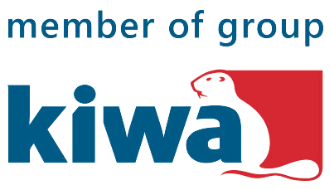Achieving your certification will have been a major accomplishment and you want to make sure it continues to deliver benefits to your organisation for the foreseeable future. Your customers, your employees and other stakeholders will have an expectation that your certification is maintained and you drive the maximum value from your efforts. Below are 7 tips to ensure you establish an appropriate reporting structure and maintain your certification.
1. Measurement of Goals, Objectives and Targets
As part of the preparation for certification and the subsequent audit you will have developed goals, objectives and targets (key initiatives) for your organisations management system. These key initiatives should be aligned to your organisational strategy. This is a crucial part of the management system reliability as it ensures the management system is an integral part of the organisations objectives. As such this process it is more explicit in the 2015 revisions of ISO9001 and ISO14001.
Measurement of the progress of key initiatives needs to be in place to establish whether the expected progress is being made. Most importantly however, feedback needs to be given to the key stakeholders within the organisation about the progress. When the key initiatives are not on track, suitable corrective actions should be generated and implemented to bring the key initiatives back to plan. This is where the value of this step is realised by taking action to ensure the key initiatives maintain on plan.
2. Demonstrate Management Ownership
Having senior management involved and leading your management system is crucial to ensure the success and the longevity of your management system. Ensuring alignment with your organisational strategy as per point 1 above, helps with this. Having senior management ownership of your management system will ensure that:
- Sufficient resources are available and continue to be prioritised to make the management system effective
- Accountability is established for the management system and associated key initiatives
Regular review meetings with senior management will allow for the key stakeholders in the organisation to have visibility over the progress of the key initiatives and the management system in general.
Leadership and management ownership is another area that is more explicitly mentioned in the 2015 revision of Quality and Environmental Management System standards, representing it’s perceived importance in the management system process.
3. Ensuring Management System Currency and Reliability
Your management system needs to be a living, breathing organisational process. It is not a set and forget type process. There are a number or areas you should ensure you are measuring and reporting against to ensure your management system is robust. These include:
- Any changing regulatory requirements that affect your management system
- Compliance with any regulatory requirements
- Capture, processing and implementation of any changing client requirements
- Identification of and subsequent implementation of corrective actions within your management system
Part of ensuring the currency of your management system is understanding the changes in the certification requirements. As has been mentioned there is a 2015 revision for Quality Management Systems and Environmental Management Systems. Whilst there is a time frame for implementation of these revisions, they represent what is considered to be best practice so ensuring your management system is aligned with these changes will ensure you capture the benefits sooner rather than later.
4. Regular System Measurement and Improvement
As highlighted above a key part of the effectiveness of your management system is it’s ability to measure progress, identify areas for improvement, establish corrective actions and to subsequently monitor and control these actions. Reporting and review processes should ensure that these corrective actions are closed out in a timely manner and that the corrective actions are sustained.
There should also be measurement on the identification of corrective actions, if you are not generating any, your management system is flawed. Giving feedback to those that raise the corrective actions is also important to maintain the durability and credibility of the program.
5. Ensuring workforce capability
It is essential that your workforce are appropriately trained in your management system and as such you will have developed a training plan. Reporting on the progress of this training plan and making sure that training is conducted as planned is very important. As with all other reporting the value comes in making sure any variances are identified and associated corrective actions are taken, this is no different when it comes to workforce capability.
The currency of your training plan should be demonstrated by ensuring it effectively tracks leavers and new starters as well as the training requirements and progress of your current workforce.
6. Effective Internal Audit
An effective internal audit program is key to ensuring compliance with the management system. To be effective, internal audit should not just identify where processes are not being followed, they should also identify opportunities for improvement which have been identified from their observations.
An internal audit plan should be set and monitoring and reporting should be in place to ensure this plan is followed, Any findings from internal audits should be reviewed by senior management and corrective actions should be established and signed off. Reporting should then take place on the timely implementation of these corrective actions and whether they were effective. This is where the real value of the internal audit process is realised.
7. Review Appropriate Documentation
An essential part of your management system is the documentation. It is from this that you can establish whether your management system is in fact achieving it’s objectives. The monitoring and reporting process ends up being a key part of the documentation process.
However, it is important to recognise that having documentation in place alone will not add value to your management system. The documentation needs to be in place, monitored, reported upon and used to support the measurement of all areas of your management system.
To see whether certification is right for your business, fill out our Quick Quote form or call us on 1800 251 0409.





